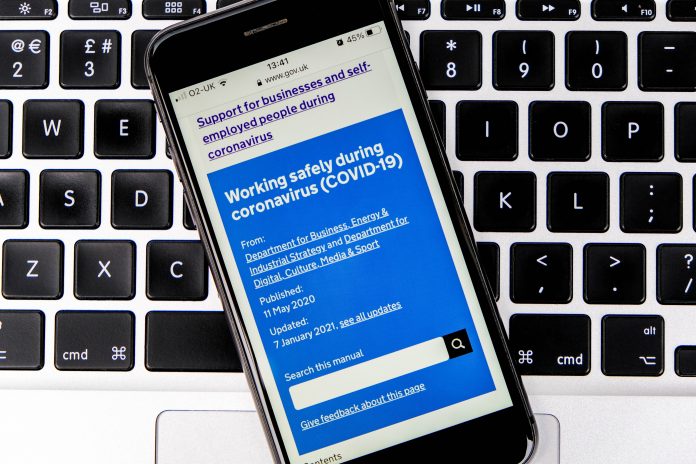Alison King, CTS’s account manager for the public sector, discusses why Government needs to make modernisation a core focus in 2021, applying the lessons learned in the importance of data during the pandemic
The COVID-19 pandemic shone a new, even brighter spotlight on the role of data in Government. Not only was data critical in responding to the pandemic, various lockdowns, assessing symptoms linked to the virus and ultimately the vaccination rollout, but it was also key in directing the public and keeping them informed.
During lockdown the Government had to be more forthcoming with information about the broader economy too – providing clarity to hard-hit sectors and initiatives like the job retention scheme.
Many public sector organisations have recognised the role that data can play in making them more agile and giving them the tools to adjust services as required. It’s why the pandemic has accelerated the UK Government’s existing approach to data innovation and has likely helped inform its new National Data Strategy, which intends to remove barriers and improve collaboration across Government.
As well as helping the country navigate economic, social and healthcare shocks in 2020, the reliance on data during the pandemic has precipitated a broader change. It has resulted in an even greater appetite for official information by the public than ever before.
The pandemic has accelerated change in the Government’s use of data internally and externally. The future of public services will be more data-driven as a result.
What does Government gain?
The trend towards greater use of data in Government long predates the pandemic and, in many ways, departments have already made significant headway in their modernisation agenda.
Thinking back to 2012, when GOV.uk was launched and replaced 2,000 websites with just one, and 2013, when it committed to a cloud-first policy, Government had made more progress than many private sector businesses of the same scale and complexity.
The savings GDS has made through technology transformation has reached billions of pounds.
And the benefits go far beyond pounds, shillings and pence too. Fundamentally using data to offer smarter public services could help relieve pressure on departments that are stretched thin. Increased digital tools could also help make it easier for the public to interact with Government, helping to speed up processes in many departments too. Fundamentally the real gains lie in how data is processed and managed – which can help Government build a better service for its stakeholders.
We’re already starting to see this. During lockdown the Office for National Statistics (ONS) used faster indicators of economic health to provide quicker analysis of GDP compared to what it normally would use. Because national GDP is often published long after the period being analysed, the organisation needed to look at ways to provide a more rapid view of the economy. This included looking at shipping movements, road traffic sensors and VAT.
Through these data sets, it was able to understand the movement of goods into and around the UK as well as exports to paint a picture of economic health. In future, this move towards real-time analysis could help provide more accurate and timely information for Government in all its forms.
One pitfall is reliance on third-party data sources. These, according to the ONS, can include some bias and it is something they have had to work around by being clear on where data has come from and where there may be potential bias. There are opportunities for Machine Learning here to be useful in understanding patterns in bias within datasets – key to making Faster Indicators more useful and accurate for Government.
An accelerated approach
Looking to the end goal of a truly digital Government in a post-pandemic UK, there is still much work to be done. Improving the consistency and interoperability of technology adoption across Departments and removing logistical barriers due to legacy systems. . And some plans around the adoption of at least a standard for citizen identity management.
To make the case for modernisation and accelerate its approach, Government needs to shift its thinking. Focussing beyond cost efficiencies, (although there is proof that these can be achieved through modernisation), will allow transformation to continue to deliver new and better services. It has to now look at the power of data and its ability to transform services in new ways while making budgets for those services stretch further. This will be crucial while the UK faces a long-term economic recovery larger than any in living memory.
Take public transport as an example. There were more than 8.3bn journeys made on public transport vehicles in 2018/19. Adapting where public transport provision is needed, the mode of transport required, and the frequency of service could be made far more agile with the help of data analysis.
This could mean operating a reduced bus service on some weekdays in winter as more people spend time indoors – particularly if people continue to work from home more days of the week than they would have done before the pandemic. This could then be balanced by a greater number of services on weekends running up to Christmas to account for people doing their Christmas shopping, which could be based on local retail sales figures from past years.
Scaling this up on a national level, Government could then review this data to optimise franchise agreements with private sector partners or collaborate with departments to plan out road works that could disrupt services.
There are huge opportunities to increase collaboration elsewhere too. For instance, between councils and NHS trusts to help ensure services for vulnerable people are accounted for in their local housing plans. Analysing this data at every level, from local to national, could then provide insights into how the Government could help support the care sector while taking steps to solve the housing crisis.
In our recent report ‘Beyond 2020: Where next for the government’s digital transformation?’ we looked at how the Government could modernise its data infrastructure further by increased use of Cloud Computing to adopt technologies like Machine Learning (ML) and Artificial Intelligence (AI) to achieve this level of service improvement.
Each can be delivered quickly and simply through infrastructures like Google’s Cloud Platform and have the ability to make a detailed analysis of vast quantities of data achievable in real-time.
Coronavirus has made the case for modernisation in Government even stronger. The first steps taken so far have enabled the public sector to start to achieve some significant results. A future digital Government could improve on these further – providing excellent public services that meet local and national objectives.











